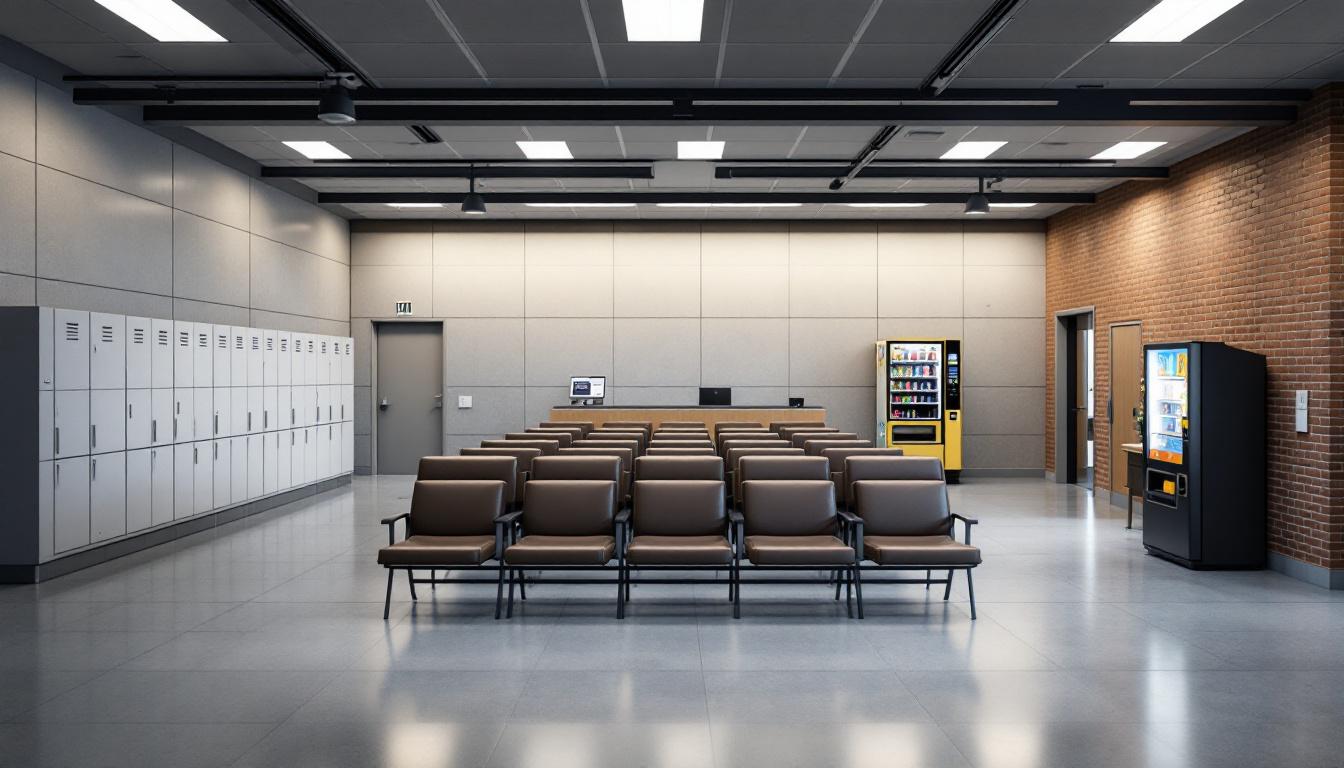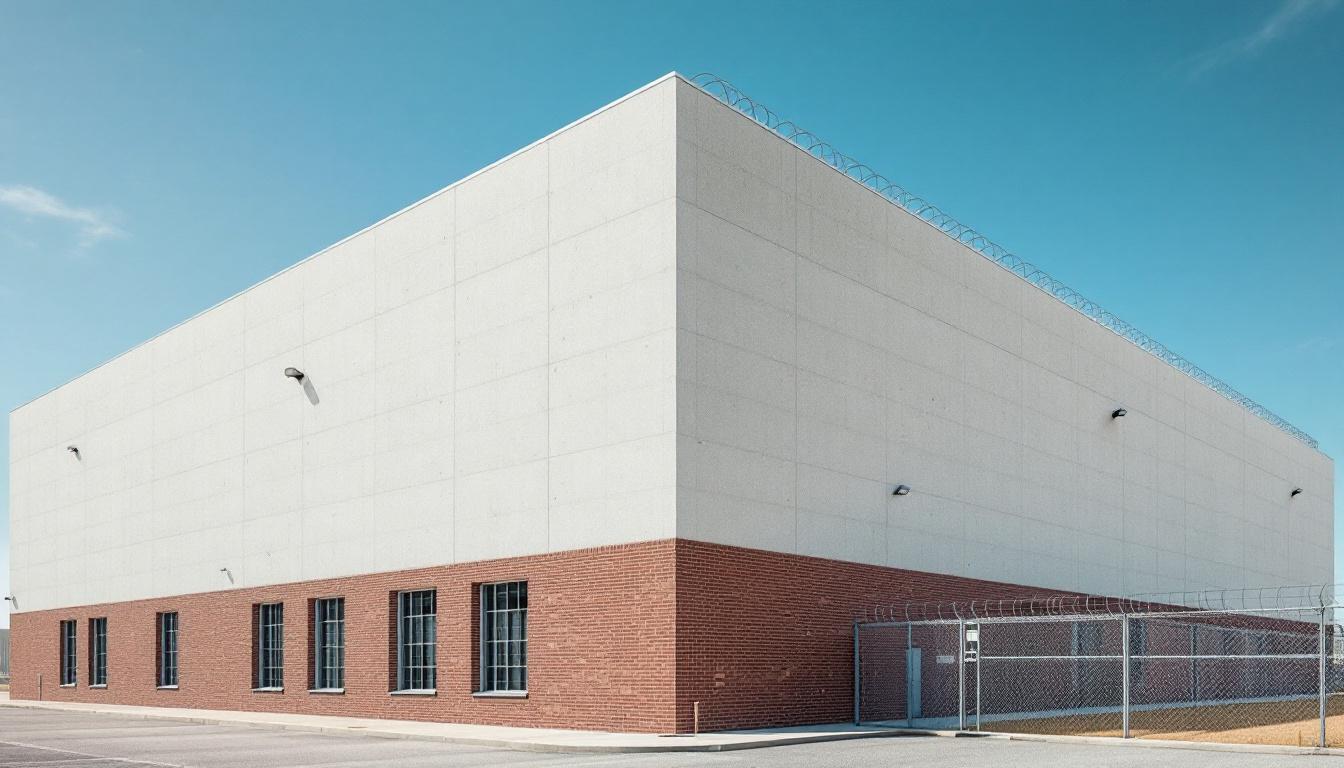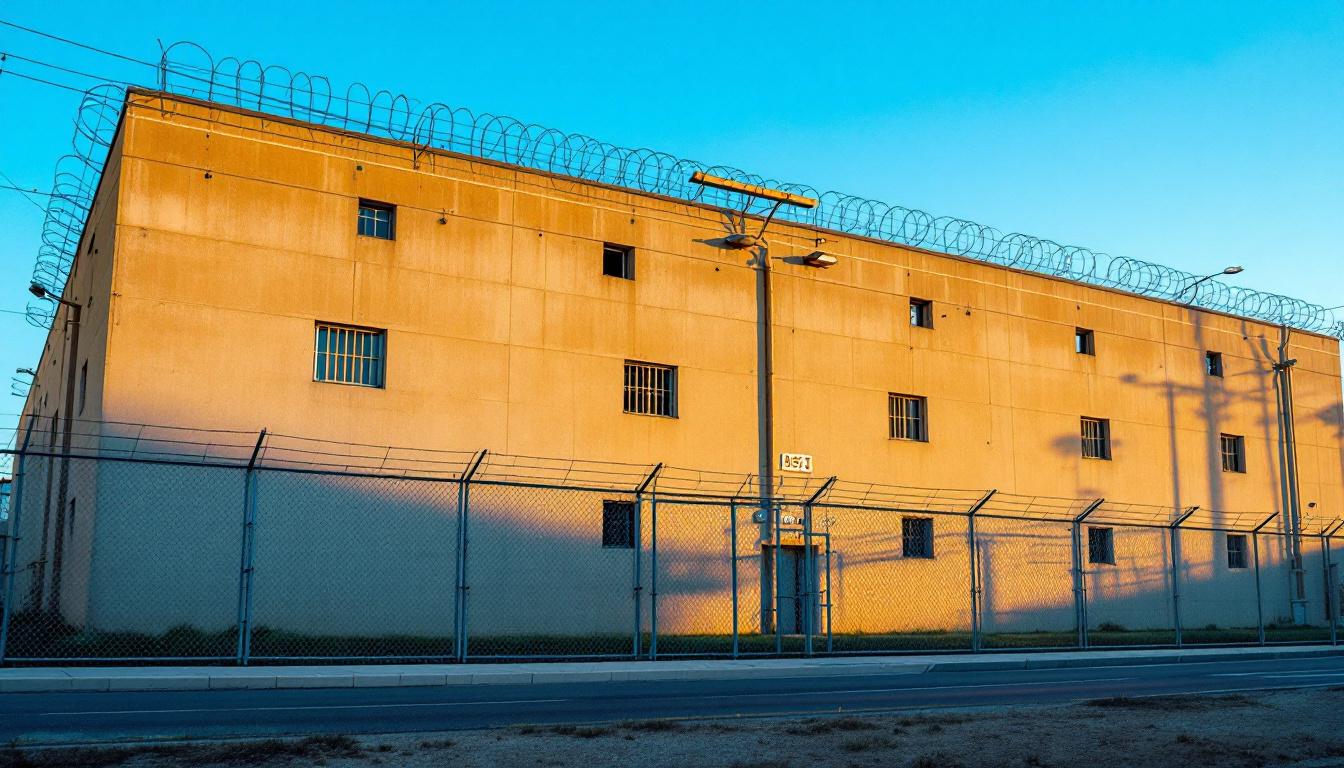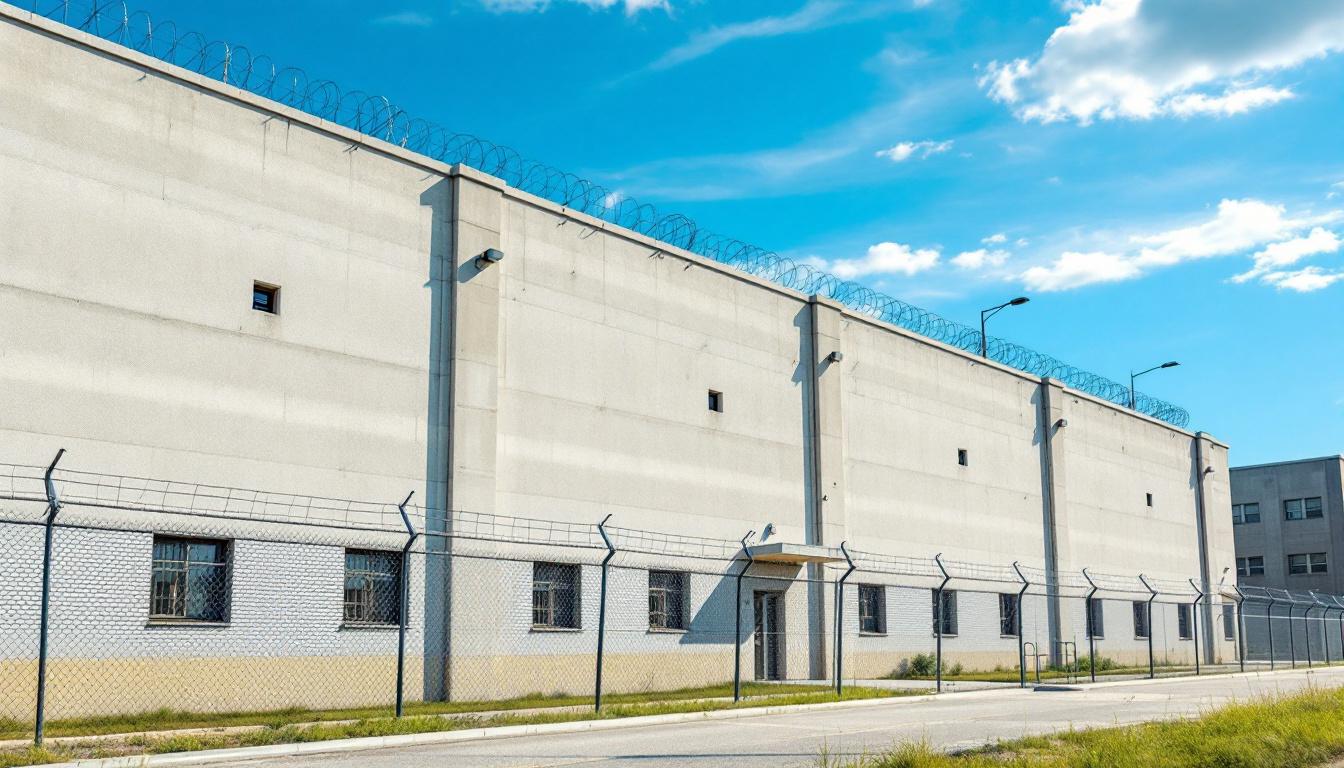
Quick Navigation
How to contact an inmate at Eastern Reception, Diagnostic and Correctional Center
This comprehensive guide will walk you through how to connect with an inmate at Eastern Reception, Diagnostic and Correctional Center. Follow the steps below to find an inmate and send letters and photos:
- Search for the inmate using our search tool below
- Create your account or log in to Penmate
- Write your message (up to 6,000 characters)
- Send instantly - inmates receive printed copies daily
Find an Inmate
Search for an inmate to start communicating today
Tip: You can search by first name, last name, or inmate ID number
To contact a person at Eastern Reception, Diagnostic and Correctional Center start by searching for the person on the official facility website. Perform a search by following these steps:
- Step 1: Enter their first name and last name into the search form and click "Search"
- Step 2: Locate their inmate record
- Step 3: Write down their Inmate ID and any housing information provided
Important! Be sure to enter the person's full name. Nicknames should not be used.
How to Send Messages to Inmates

You can use your phone or computer to send emails, letters, and photos to an inmate. Messages are sent electronically to inmate tablets or kiosks at the facility. If you would like to send a message, start by searching for an inmate at Eastern Reception, Diagnostic and Correctional Center.
Sending Photos and Postcards

A great way to send love and support to a loved one at Eastern Reception, Diagnostic and Correctional Center is to send photos and postcards. It only takes a few minutes to send photos from your phone and it makes a huge difference. You can also mail postcards with words of support and inspiration, or design your own postcard for special moments like birthdays and holidays.
Important! Be sure not to send any explicit photos or they may not be approved by the facility. You can also use a photo printing app like Penmate to make sure your photos are printed at the correct size (4x6 or 3x5) and are mailed according to the rules and regulations of Eastern Reception, Diagnostic and Correctional Center.
Frequently asked questions about Eastern Reception, Diagnostic and Correctional Center
-
How long does it take to deliver a message?
If you're sending an email message your letter is usually delivered within 24-48 hours. For messages sent via mail you should expect delivery within 3-7 days. All messages will need be approved by Eastern Reception, Diagnostic and Correctional Center.
-
How much does it cost to send a message to Eastern Reception, Diagnostic and Correctional Center?
You can send a message free using your phone or mail a message via USPS for the price of a $0.60 stamp and envelope. You can also purchase credits or e-stamps from services starting at $1.99.
-
What services can I use to contact an inmate at Eastern Reception, Diagnostic and Correctional Center?
Penmate
You can use Penmate to send letters and photos to an inmate from your phone. It's an easy way to stay in touch during your loved one's incarceration. Use the inmate locator to find an inmate's location and contact information, then you can send messages within a few minutes.
Securus messaging
Securus may be another option for communicating with an inmate at Eastern Reception, Diagnostic and Correctional Center. You can create a friends and family account and purchase credits to send messages. All messages will be reviewed and must be approved by the facility.
JPay
Some county jails and state prisons may support sending messages with JPay. You must register an account with the system, find your loved one, and purchase stamps to send messages. For some locations you can also attach photos.
Smart Jail Mail
You may also check if Smart Jail Mail is available at Eastern Reception, Diagnostic and Correctional Center. Smart Jail Mail is operated by Smart Communications and has contracted with some state and county jails. After purchasing credits, your messages and photos are sent to the facility, printed out, and then handed out to your loved one.
-
What is the mailing address of Eastern Reception, Diagnostic and Correctional Center?
Mailing address:
Eastern Reception, Diagnostic and Correctional Center
2727 Hwy K
Bonne Terre, MO 63628
Phone: (573) 358-5516 -
What are the visiting hours at Eastern Reception, Diagnostic and Correctional Center?
Visiting hours at Eastern Reception, Diagnostic and Correctional Center vary by housing unit and security level. Generally, visits are scheduled on weekends and holidays, with some facilities offering weekday visits. Contact the facility directly at (573) 358-5516 or check their website for the current visiting schedule. Visits typically last 30-60 minutes and must be scheduled in advance.
-
What items are prohibited when sending mail to Eastern Reception, Diagnostic and Correctional Center?
Prohibited items typically include: cash, personal checks, stamps, stickers, glitter, glue, tape, staples, paperclips, polaroid photos, musical or blank greeting cards, hardcover books, magazines with staples, and any items containing metal or electronics. Only send letters on plain white paper with blue or black ink. Photos must be printed on regular photo paper (no Polaroids). Always check with Eastern Reception, Diagnostic and Correctional Center for their specific mail policies.
-
How do I send money to an inmate at Eastern Reception, Diagnostic and Correctional Center?
You can send money to an inmate at Eastern Reception, Diagnostic and Correctional Center through several methods: 1) Online using JPay, Access Corrections, or the facility's approved vendor, 2) Money orders mailed directly to the facility with the inmate's name and ID number, 3) Kiosks located in the facility lobby, or 4) Over the phone using a credit or debit card. Fees vary by method, typically ranging from $2.95 to $11.95 per transaction.
-
Can I schedule a video visit with an inmate at Eastern Reception, Diagnostic and Correctional Center?
Many facilities now offer video visitation as an alternative to in-person visits. At Eastern Reception, Diagnostic and Correctional Center, video visits may be available through services like Penmate, Securus Video Connect, GTL, or ICSolutions. Video visits typically cost $10-20 for 20-30 minutes and must be scheduled in advance. You'll need a computer or smartphone with a camera and reliable internet connection. Contact the facility for their specific video visitation policies and approved vendors.
-
What identification do I need to visit an inmate at Eastern Reception, Diagnostic and Correctional Center?
All visitors must present valid government-issued photo identification such as a driver's license, state ID, passport, or military ID. Minors must be accompanied by a parent or legal guardian who can provide the minor's birth certificate. Some facilities require visitors to be on the inmate's approved visitation list, which may require a background check. Contact Eastern Reception, Diagnostic and Correctional Center for specific ID requirements and visitor approval procedures.
-
How can I find out an inmate's release date?
To find an inmate's release date at Eastern Reception, Diagnostic and Correctional Center, you can: 1) Use the online inmate search tool if available, 2) Call the facility's records department, 3) Contact the inmate's case manager or counselor, or 4) Have the inmate provide this information during a call or visit. For privacy reasons, some facilities only release this information to immediate family members.
Facility Overview
Contact Information
Eastern Reception, Diagnostic and Correctional Center2727 Hwy K
Bonne Terre, MO 63628
Phone: (573) 358-5516
Official Website

About Eastern Reception, Diagnostic and Correctional Center
Within Missouri's correctional system, maintaining family connections represents a cornerstone of rehabilitation efforts, and the E.R.D.C.C. serves this mission through comprehensive communication services located in Tampa, MO. The facility operates under the Missouri Department of Corrections' modernized digital mail system, which transformed correspondence procedures in July 2022 by implementing electronic scanning and delivery through the Digital Mail Center in Tampa, Florida. This technological advancement ensures that residents maintain vital connections with family and friends through both traditional mail correspondence and email capabilities via computer tablets.
The facility's communication infrastructure reflects the state's commitment to supporting successful reintegration outcomes. Personal postal mail undergoes digital scanning at the centralized processing center before being delivered electronically to residents' media players, while those without tablet access receive printed copies of their correspondence. The system accommodates various forms of communication including letters, postcards, pictures, and drawings, with mail held for 45 calendar days at the Digital Mail Center to ensure accessibility. Email services through computer tablets provide additional real-time communication options, enhancing residents' ability to maintain meaningful relationships during their incarceration.
E.R.D.C.C. typically offers educational programming, vocational training, and rehabilitative services common to Missouri correctional facilities, though specific program details may vary based on facility classification and resident needs. The institution maintains security protocols while supporting family engagement, recognizing that sustained community connections often contribute to reduced recidivism rates and successful community reentry. Located in Tampa, MO, the facility operates within the broader framework of Missouri's correctional system, which emphasizes both public safety and evidence-based rehabilitation approaches.
Programs & Services
The Missouri Department of Corrections has implemented a comprehensive digital mail system that transforms how residents at E.R.D.C.C. maintain connections with their support networks. Through computer tablets, residents can send and receive email communications, while all personal postal mail is processed through a Digital Mail Center in Tampa, Florida, where correspondence is scanned and delivered electronically to inmates' media players. This modernized approach to mail handling, which became effective in July 2022, allows for the digital delivery of letters, postcards, pictures, and drawings, helping residents stay connected with family and friends during their incarceration.
Beyond communication services, E.R.D.C.C. typically offers a range of educational and vocational programs designed to support successful reintegration into the community. The facility may provide GED preparation classes, adult basic education, and various vocational training opportunities that could include areas such as construction trades, food service, or maintenance skills. Substance abuse treatment programs and mental health counseling services are often available to address underlying issues that may have contributed to criminal behavior, while religious services and recreational activities help support inmates' overall well-being during their time at the facility.
The facility's programming approach often emphasizes personal responsibility and skill development, with work assignments that may include facility maintenance, food service operations, or other institutional support roles. Family visitation programs, when available, complement the digital communication services by providing face-to-face contact opportunities, while case management services typically help residents develop reentry plans and connect with community resources prior to their release.
Daily Life & Visitation

Communication with loved ones forms a central part of the routine for residents at E.R.D.C.C., with modern technology reshaping how correspondence flows in and out of the facility. Each resident typically has access to a computer tablet that serves as their primary gateway for receiving mail and staying connected with family and friends. The Missouri Department of Corrections implemented a digital mail system in July 2022, meaning all personal correspondence now gets processed through a Digital Mail Center in Tampa, Florida, where letters, postcards, pictures, and drawings are scanned and delivered electronically to residents' tablets.
The structured communication system reflects the facility's approach to maintaining security while supporting family connections. Mail must be properly addressed with the resident's name and DOC identification number, and senders are encouraged to number letter pages and limit items to 10 per envelope for efficient processing. For residents without tablet access, scanned mail is printed and delivered traditionally. This digital approach typically allows for faster mail delivery while maintaining the security protocols essential to facility operations.
Beyond correspondence, daily routines at E.R.D.C.C. likely follow the structured schedule common to Missouri correctional facilities, with designated times for meals, work assignments, educational programming, and recreation. The facility may offer various rehabilitation programs, vocational training opportunities, and library services to support residents' personal development. Medical care, counseling services, and religious programs are typically available as part of the comprehensive approach to corrections, all operating within the security framework necessary for maintaining a safe environment for both residents and staff.
Ready to Connect?
Start communicating with your loved one today
Search for an Inmate









